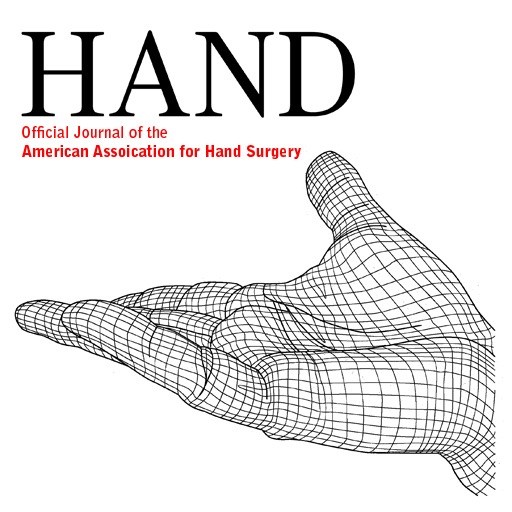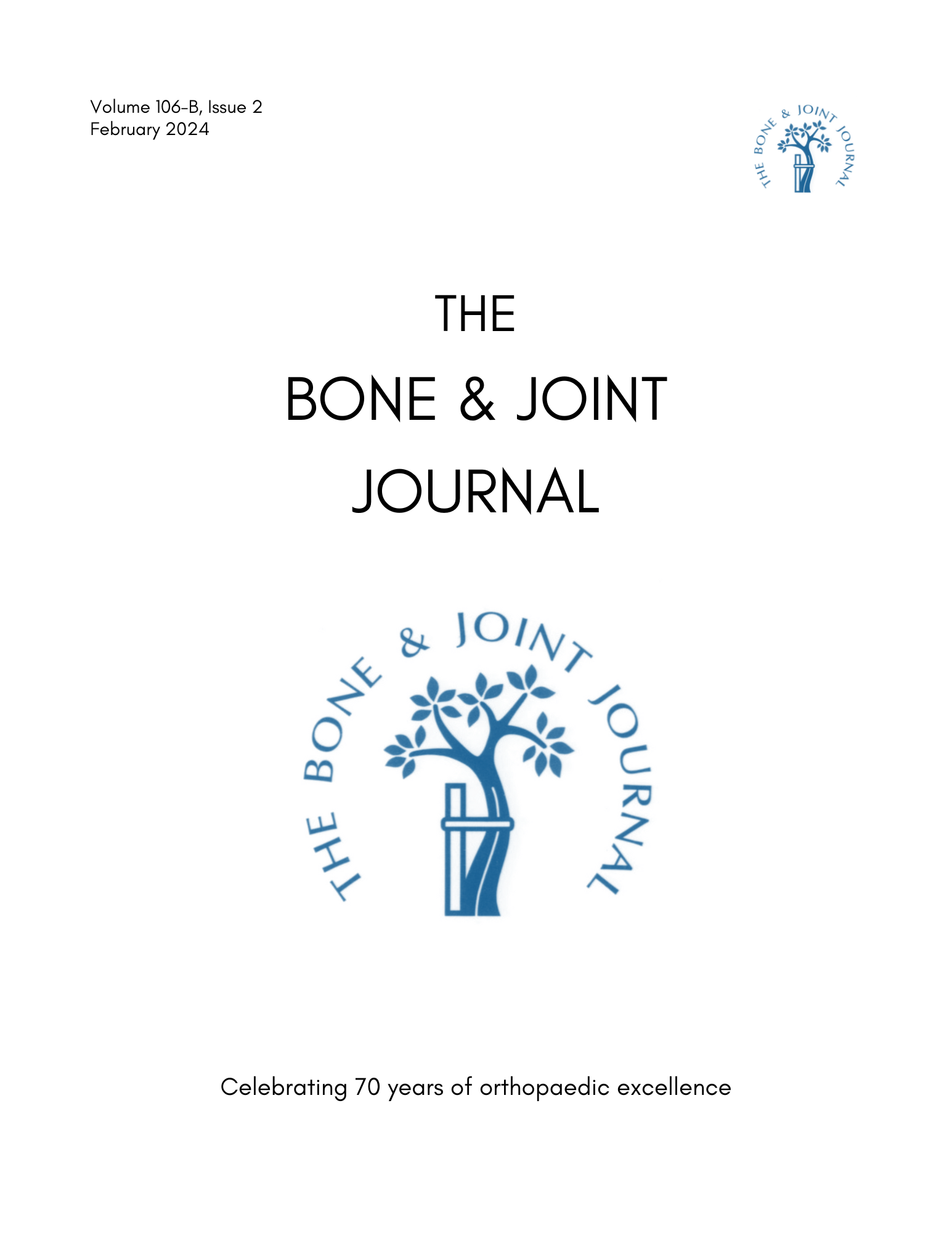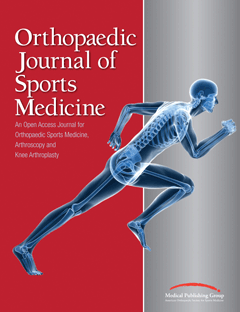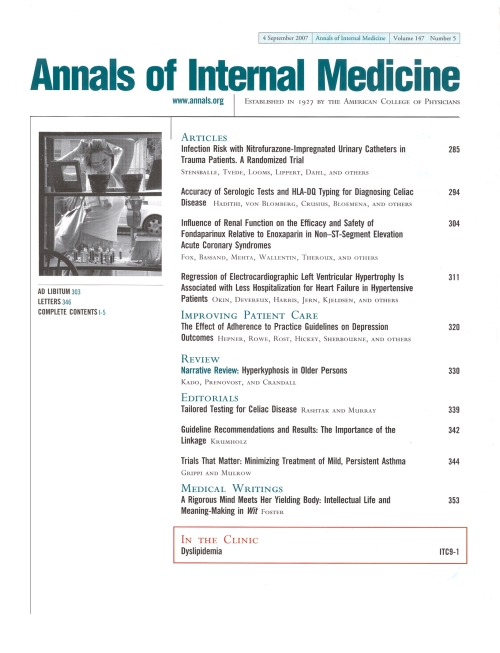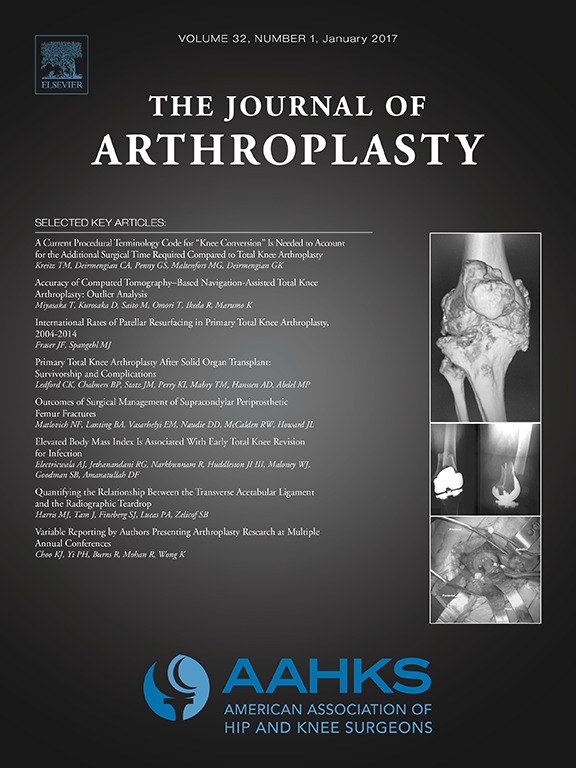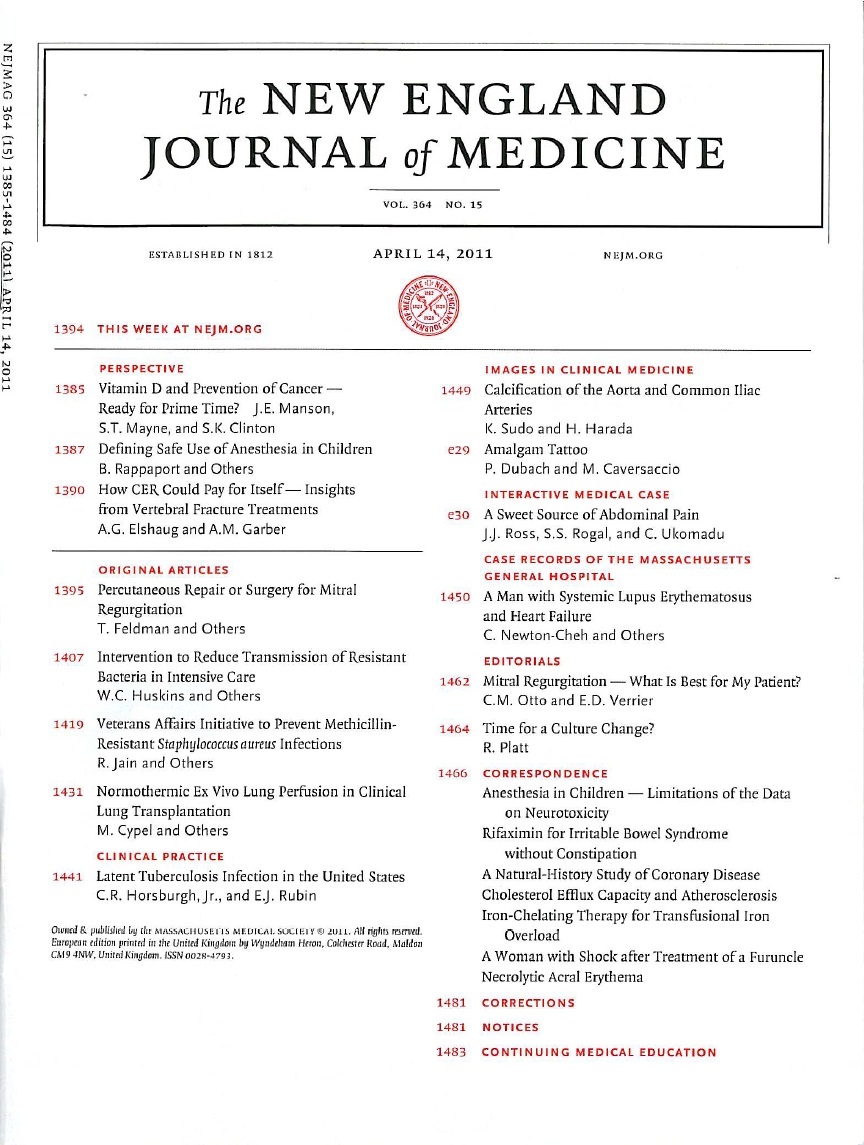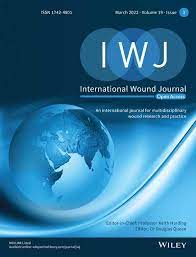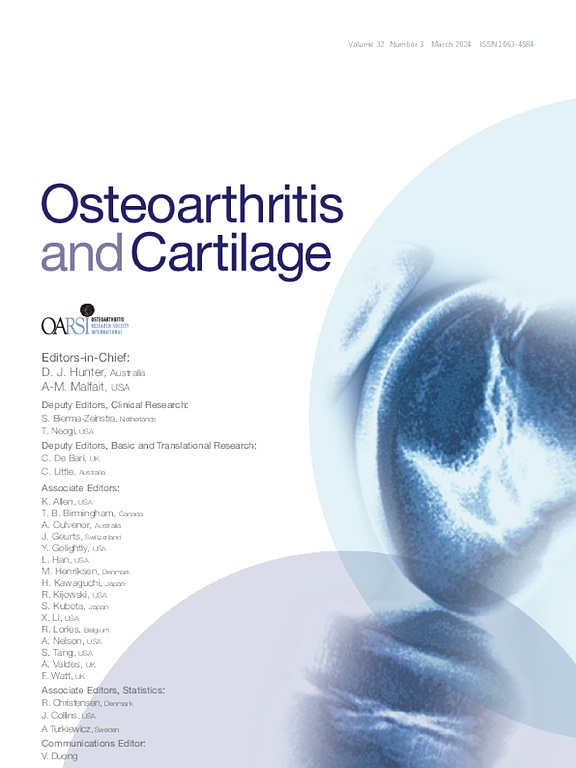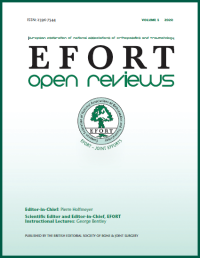PeerView
You are viewing the most viewed ACE Reports by Orthopaedic Surgeons over the last 30 days in all specialties.
Displaying
100%
①
Synopsis:
23 randomized controlled trials (2284 patients) comparing open versus endoscopic techniques for carpal tunnel release in patients with carpal tunnel syndrome were included in this systematic review and meta-analysis.A subgroup analysis was also conducted on single- versus dual-portal endoscopic treatment.The primary outcomes of interest included complication and reoperation rates.Secondary outcomes included operative time, the incidence of scar tenderness and pillar pain, normalized satisfaction scale, the incidence of complete or near complete symptom relief, Boston Carpal Tunnel Questionnaire (BCTQ) symptom and function, and time to return to work.All outcomes were similar between the two groups except for time to return to work and incidence of scar tenderness (dual-portal vs open) which all favored the endoscopic group.The incidence of nerve injury was significantly lower in the open-technique group. Overall, the endoscopic...
Read More »
Level 1 Meta Analysis
①
Synopsis:
Two hundred and sixteen patients with advanced osteoarthritis scheduled for primary total knee arthroplasty (TKA) were randomized to receive one of three TKA prosthetic designs from the same system: cruciate-retaining (CR; n=72), anterior-stabilized (AS; n=72), or posterior-stabilized (PS; n=72).The primary outcome of interest was the mean score of all five subscales of the Knee injury and Osteoarthritis Outcome Score (KOOS) measured at a two-year follow-up appointment.Secondary outcomes included individual KOOS subscales, Oxford Knee Score, EuroQol five-dimension health questionnaire, EuroQol visual analogue scale, range of motion, and patient satisfaction.Outcomes were assessed up to two years postoperatively.Overall, patients reported similar levels of pain, function, satisfaction, and general health in all three prosthetic design groups. However, the PS...
Read More »
Level 1 RCT
Perioperative Blood Flow Restriction Therapy Program After Anterior Cruciate Ligament Reconstruction
①
Synopsis:
Forty-six patients who sustained an anterior cruciate ligament (ACL) tear and were scheduled for reconstruction were randomized into a group receiving either a blood flow restriction (BFR) therapy program (n=22) or a control group without BFR (n=24).The primary outcome of interest was isometric quadriceps strength at 3 months postoperatively, measured as peak and mean torques during seated leg extension exercises and presented as a ratio of the healthy limb.Secondary outcomes included patient-reported outcomes such as pain, knee function, and physical function, knee range of motion, quadriceps circumference and adverse effects.Outcomes were assessed up to 6 months postoperatively. Overall, the study...
Read More »
Level 1 RCT
①
Synopsis:
A total of sixty-one patients with posterolateral tibial plateau fractures (PTPF) were randomized to receive either conventional surgery (n=30) or surgery using personalised 3D printing technology (n=31).The primary outcome of interest was operative time.Secondary outcomes included intraoperative blood loss, intraoperative fluoroscopy shots, radiographic outcomes, functional outcomes, and fracture complications, assessed 12 months postoperatively. Overall, the study...
Read More »
Level 1 RCT
Synopsis:
Two hundred and seven studies with 32959 participants were analyzed in this network meta-analysis.The aim of this study was to compare outpatient treatments for managing acute pain from non-low back musculoskeletal injuries.Results revealed that the treatment with the greatest benefit was using topical nonsteroidal anti-inflammatory agents (NSAIDs).Afterwards, oral NSAIDs were beneficial which was followed by acetiminophen with or without diclofenac.The benefits included relieving pain 1-7 days, as well physical functioning , and symptom relief. Moreover, topical NSAIDs demonstrated increase in treatment satisfaction. Fentanyl and acetaminophen...
Read More »
Meta Analysis
①
Synopsis:
132 patients between the ages of 50 and 80 years undergoing primary, unilateral total knee arthroplasty (TKA) were included in this single-center, 3-arm, triple blinded trial.Patients were randomized to receive either an interspace between the popliteal artery and capsule of the posterior knee block (iPACK; n=44), genicular nerve block (GNB; n=44) or a combination of the two (iPACK+GNB; n=44) alongside combined spinal anesthesia and continuous adductor canal block.The primary outcome of interest was 8-hour postoperative knee pain during movement, measured using a visual analog scale (VAS).The secondary outcomes of interest included VAS knee pain and posterior knee pain during rest and movement in the post anesthesia care unit (PACU) and at 4, 8, 12, 24, 36, and 48 hours, morphine consumption at 12, 24 and 48 hours, sensorimotor function of the tibial and common peroneal nerve (CPN), timed up and go (TUG) scores, range of motion (ROM), and quadriceps strength (QMS).Additional outcomes included the length of hospital stay, quality of sleep, and patient satisfaction.According to study findings, a significant difference for VAS knee pain during movement, VAS knee pain at rest, and VAS posterior knee pain at rest and during movement was found for all groups at 4, 8, and 12 hours, as well as for VAS knee pain during movement at 24 hours, and VAS knee pain at rest and on movement and VAS posterior knee pain on movement at 48 hours.However, this difference was only clinically significant for the iPACK+GNB group VAS knee pain during movement scores at 4- and 8-hours when compared with the iPACK group. No clinically significant...
Read More »
Author verified Level 1 RCT
①
Synopsis:
9535 patients undergoing non-cardiac surgery were randomized to receive tranexamic acid (n=4757) or placebo (n=4778) at the start and end of surgery.The primary efficacy outcome was a composite bleeding outcome of life-threatening bleeding, major bleeding, or bleeding into a critical organ.The primary safety outcome was a composite endpoint of myocardial injury, non-hemorrhagic stroke, peripheral arterial thrombosis, or symptomatic proximal venous thromboembolism, which was tested for non-inferiority vs.placebo.The results of the trial found a significantly lower rate of composite bleeding events in the tranexamic acid group vs.placebo (9.1% vs.11.7%, p<0.001).However, the non-inferiority of tranexamic acid was not established for the composite cardiovascular safety outcome (14.2% vs. 13.9%, p=0.04 [p<0.025...
Read More »
Level 1 RCT
①
Synopsis:
Fifteen studies involving a total of 353,169 patients undergoing knee or hip arthroplasty were included in this meta-analysis.Among them, 156,405 patients received Spinal Anaesthesia (SA), while 196,764 patients underwent General Anaesthesia (GA).The primary outcome assessed was the incidence of Postoperative Surgical Site Infections (SSIs).Outcomes were evaluated up to 30 days post-surgery. This meta-analysis reveals...
Read More »
Level 1 Meta Analysis
①
Synopsis:
Three randomized controlled trials, involving a total of 343 patients with anterior cruciate ligament (ACL) injury, were included in this systematic review and meta-analysis comparing ACL surgery (Treatment A) vs.non-surgical treatment (Treatment B).Of the total participants, 180 underwent ACL reconstruction surgery, while 163 received non-surgical treatment.The primary outcome of interest was the development of knee osteoarthritis, which was assessed using the Kellgren-Lawrence scoring system, with a follow-up duration ranging from 2 to 11.1 years. The meta-analysis revealed...
Read More »
Level 1 Meta Analysis
①
Synopsis:
A total of five randomized controlled studies including 181 patients undergoing arthroscopic surgery for degenerative arthropathy of the knee were included in this systematic review and meta-analysis comparing the addition of intra-articular hyaluronic acid (HA) immediately after surgery (Treatment A, n=181) vs.placebo or no additional treatment (Treatment B, n=182).Pooled outcomes of interest included postoperative pain using the visual analog scale (VAS), and functional recovery using the Western Ontario and McMaster University Osteoarthritis Index (WOMAC) score, International Knee Documentation Committee (IKDC), Tegner score, and Lysholm score.There was no statistically significant difference in pain relief and functional outcomes between both groups.Therefore, the addition of HA immediately after surgery provided no discernible benefit to pain relief or knee function.
Read More »
Level 1 Meta Analysis




 LOGIN
LOGIN


